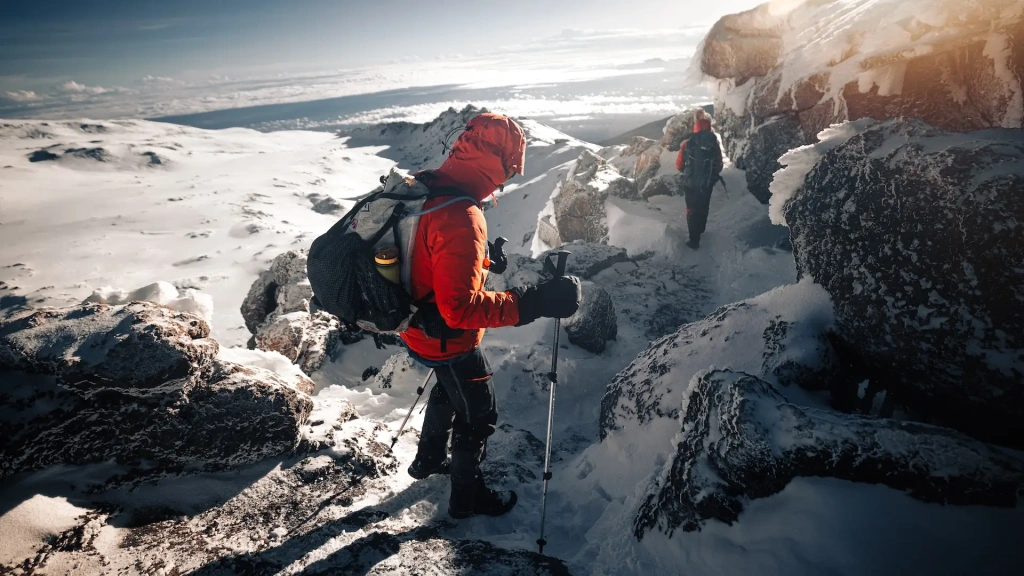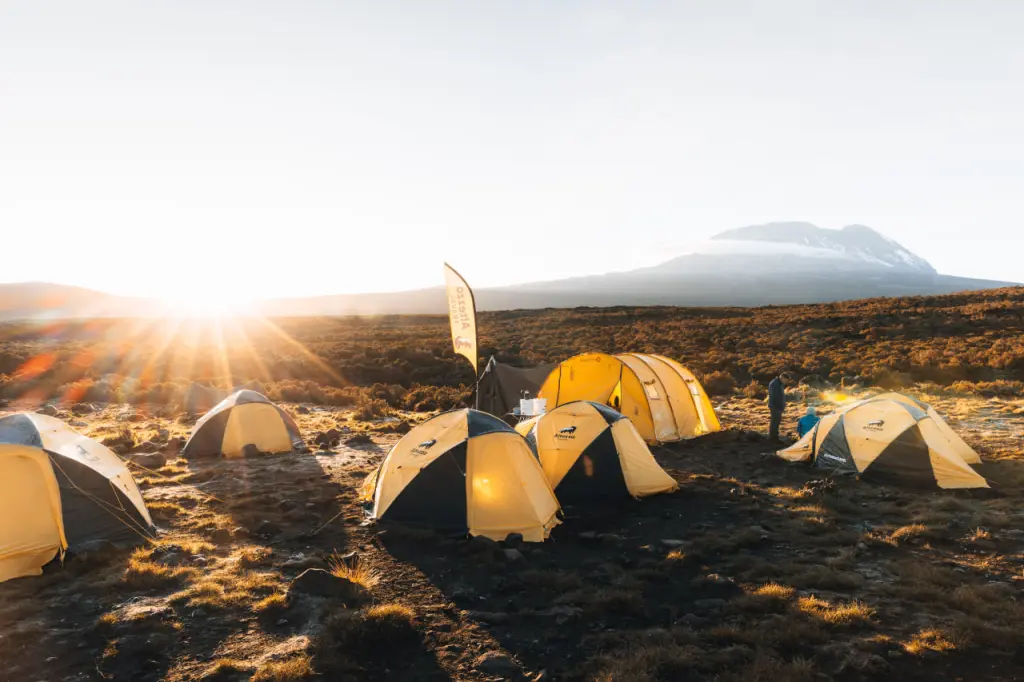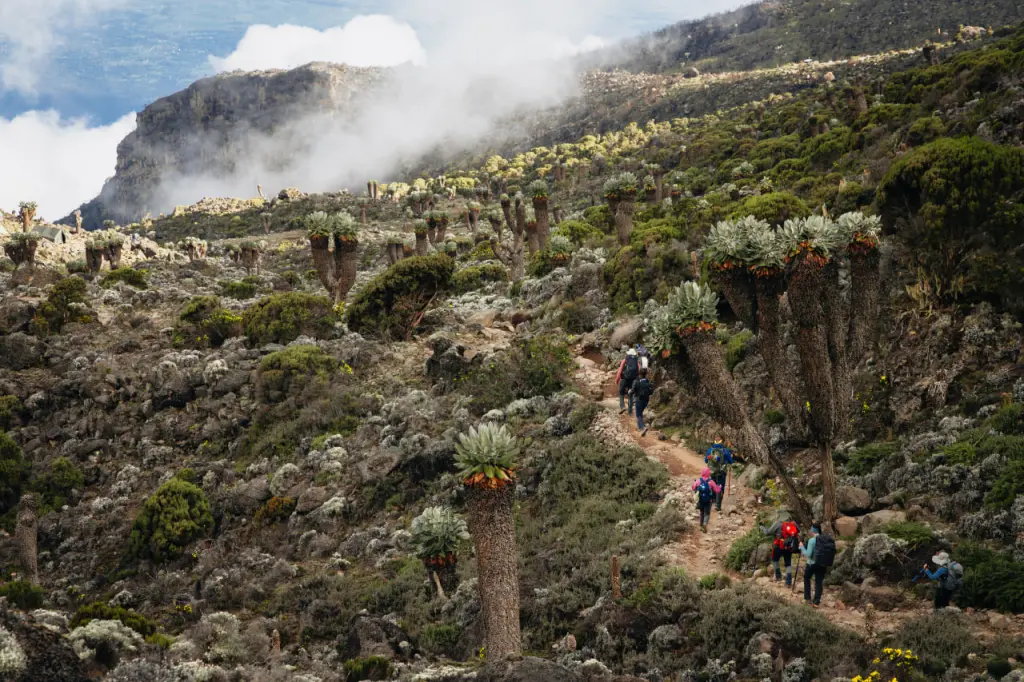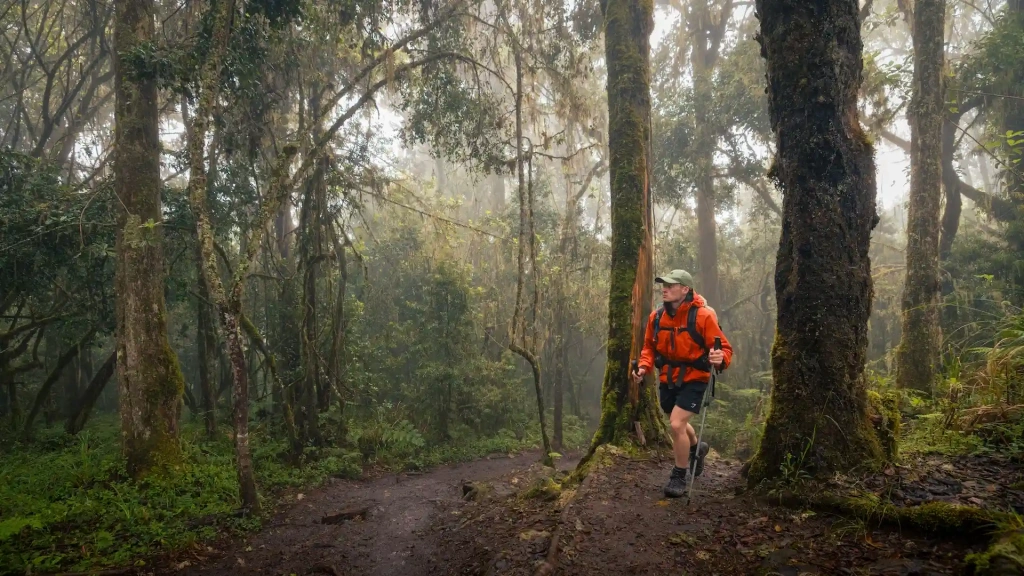A Kilimanjaro hike takes between 5 and 9 days. Success rates are much higher on longer 7+ day programs, which allow more time for acclimatization. Shorter 5- or 6-day itineraries offer less time to adjust and carry a higher risk of altitude sickness. As a result, they have much lower summit success rates.
Below, we explain what affects the length of a Kilimanjaro trek for both beginners and experienced hikers.
How long does each Kilimanjaro route take?
The Kilimanjaro National Park Authority (KINAPA) established minimum route durations based on what was initially considered safe for most hikers. However, experience over time has shown that these minimums are often too short. In reality, most climbers need additional days to acclimatize properly.
According to the International Climbing and Mountaineering Federation (UIAA), spending at least seven days on the mountain is ideal for a safe and enjoyable trek.
The table below lists each route's distance, minimum, and recommended duration. Please note that the distance of the same route may vary due to different starting points.
* Due to the risk of rockfalls on the western slope of Mount Kilimanjaro, the KINAPA temporarily closed the Western Breach route until further notice.
A 2021 study by Dr. Martin Burtscher and Dr. Urs Hefti emphasizes that slow, gradual ascent is the most effective way to prevent high-altitude illness, which can be dangerous. This is especially important on Kilimanjaro, where rapid elevation gain is common.
Other factors that affect the length of your Kilimanjaro climb
Beyond park regulations, the key factor is how much time your body needs to adjust to the altitude. Several factors play a role:
Fitness level and hiking experience
While Kilimanjaro doesn’t require technical climbing skills, the trails are rugged, and daily hikes between camps can cover 7 to 9 kilometers (4 to 6 miles). Good fitness is essential. Less experienced hikers should choose longer programs to allow for more rest and recovery.
Prior acclimatization
If you’ve recently spent a few days above 4,000 meters (13,120 feet) within the last three months, you can consider shorter 5- or 6-day climbing programs. However, Kilimanjaro is not just about reaching the summit. It’s a chance to explore one of East Africa’s most unique environments — home to rare birds, wildlife, and extraordinary flora like Dendrosenecio kilimanjari. Choosing a 7- or 8-day program gives you the time to enjoy the journey, not just the destination. You’ll gain a deeper understanding of the mountain’s rich ecosystem and have more time to connect with your guides and fellow climbers.
Some climbers arrive in top physical condition, confident in their ability to summit quickly. But on Kilimanjaro, strength alone isn't enough. Altitude affects everyone differently, and acclimatization is key. Even elite athletes can fall ill if they ascend too fast.
If you’re aiming for a shorter climb, consider first tackling Mount Meru. Located just 80 kilometers (50 miles) from Kilimanjaro and standing at 4,566 meters (14,980 feet), it’s an excellent option for pre-acclimatization.
Who should choose a 5–6 day Kilimanjaro climb?
These short treks are only suitable if you’ve recently acclimatized at high altitude — ideally within the last few months. Without that, the risk of altitude sickness is significantly higher. The pace is fast, the days are long, and there's little room for recovery. Most trekkers should avoid this option.
Expert Opinion
The 6-day Machame itinerary is one of the toughest options on Kilimanjaro. Summit night begins after only 5 to 6 hours of rest following a demanding 8 to 9-hour hike. Including the descent, climbers cover over 27 kilometers (16.8 miles) in just 24 hours, on minimal sleep. Even experienced hikers find it exhausting.

Who should choose a 7-day Kilimanjaro itinerary?
A 7-day climb is the most suitable option for the majority of hikers. It offers a good balance between acclimatization and effort. You’ll have enough time to adjust to the altitude and enjoy the epic scenery. This is the recommended choice for anyone without recent high-altitude experience.
Who should consider 8-day or longer hikes?
Choose a longer itinerary if you prefer a slower pace, are traveling with children or seniors, or want extra time to acclimatize. It’s also ideal for first-time hikers or anyone who struggled with altitude before. These treks allow for more rest, flexibility, and enjoyment of the route. They’re the safest and most comfortable option overall.
How long does the descent take?
Descending from Kilimanjaro usually takes about one and a half days. After reaching the summit at sunrise, hikers return to the summit camp for a short rest before continuing down to the final overnight stop. The following morning, the group completes the last stretch to the park gate, typically arriving at lunchtime.
Can you climb Kilimanjaro in fewer than 5 days?
Yes, but it's extremely rare. The official minimum duration set by park authorities is five days, so only highly experienced and pre-acclimatized athletes attempt faster ascents, requiring special permits. These climbs leave very little margin for acclimatization and significantly increase the risk of altitude sickness.
For the vast majority of trekkers, spending more time on the mountain is not just safer — it dramatically improves summit success rates.
Is it possible to climb Mount Kilimanjaro in one day?
Technically, yes — but only under very specific conditions. Some of our Altezza Travel skyrunners have made the round trip in under 8 hours. Elite mountaineers like Nimsdai Purja have also climbed with us, reaching the summit in 9 hours. But these are exceptional cases.
Such rapid ascents are only suitable for athletes with extreme endurance and deep acclimatization, who often live and train at high altitudes.
All content on Altezza Travel is created with expert insights and thorough research, in line with our Editorial Policy.
Want to know more about Tanzania adventures?
Get in touch with our team! We've explored all the top destinations across Tanzania. Our Kilimanjaro-based adventure consultants are ready to share tips and help you plan your unforgettable journey.



















Thanks for your question, Brian. Although there are some routes to climb Mount Kilimanjaro that are shorter than others (like Umbwe), the key to a safe climb is taking enough time to acclimatize. Shorter climbs like the 5-day or 6-day itineraries can be too quick for most people to adjust to the high altitude safely. Spending at least 7 days on the mountain is generally recommended to reduce the risk of altitude sickness. Shorter itineraries are recommended to experienced hikers who are already accustomed to high altitudes.
Thanks for your question, Brian. Although there are some routes to climb Mount Kilimanjaro that are shorter than others (like Umbwe), the key to a safe climb is taking enough time to acclimatize. Shorter climbs like the 5-day or 6-day itineraries can be too quick for most people to adjust to the high altitude safely. Spending at least 7 days on the mountain is generally recommended to reduce the risk of altitude sickness. Shorter itineraries are recommended to experienced hikers who are already accustomed to high altitudes.